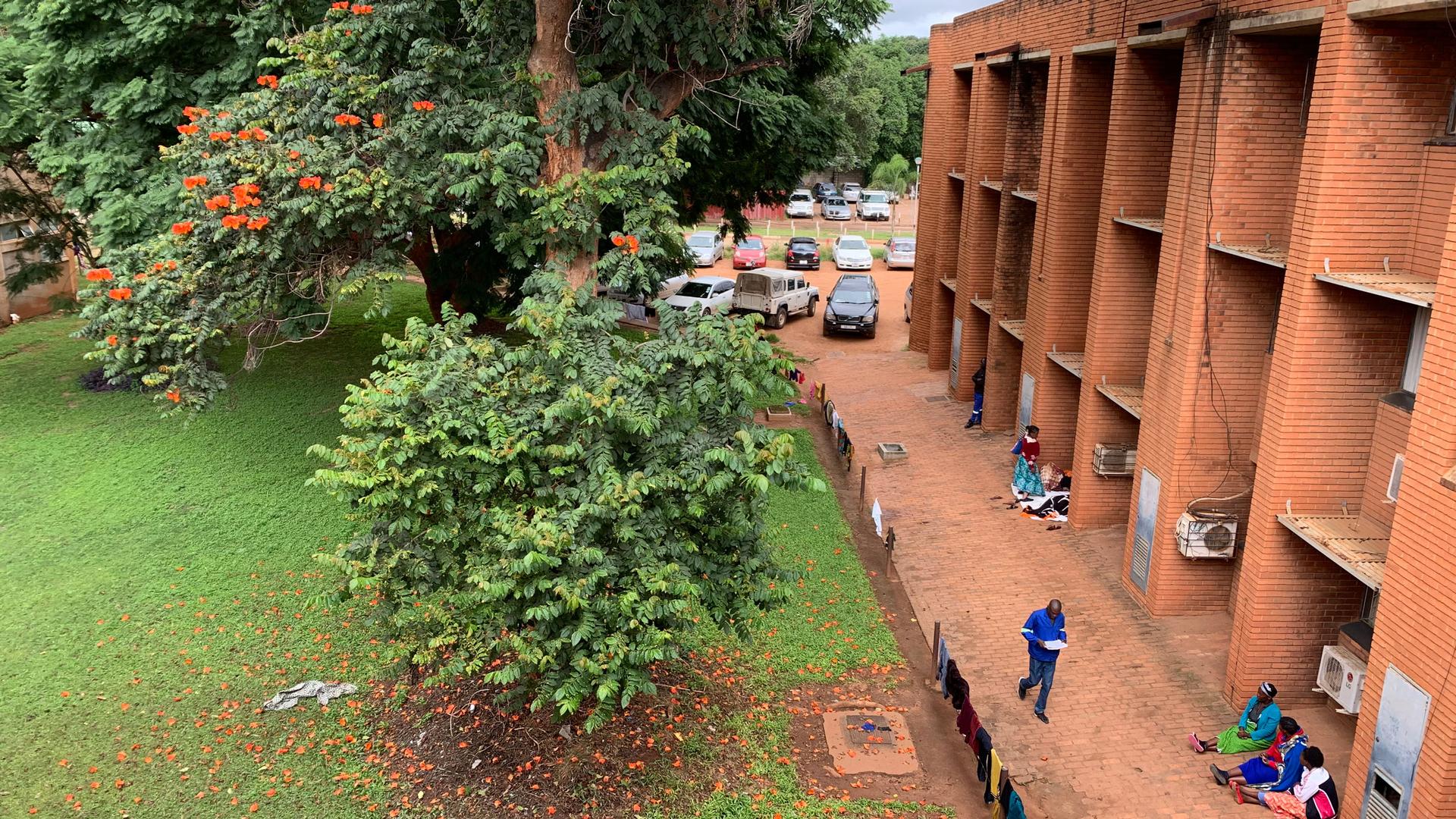Nala Phiri first noticed something was off about her walking soon after her son was born in 2016.
“I couldn’t walk the way I used to,” she said. “I was limping, and I’d literally be dragging my leg along.”
Phiri returned to the hospital in Lusaka, the capital of Zambia, where she had given birth. The X-rays came out normal. The doctor was not sure how to explain it.
Phiri was eventually diagnosed with multiple sclerosis, a disease in which the body’s immune system attacks the nerves of the brain, spinal cord and eyes. But it took three years and several medical evaluations before the diagnosis was even considered a possibility.
An estimated 2.8 million people worldwide live with MS. Most cases are found in North America and Europe. The disease has long been thought to be near-nonexistent in sub-Saharan Africa. But this notion is now being challenged by the growing presence of neurologists in the region.
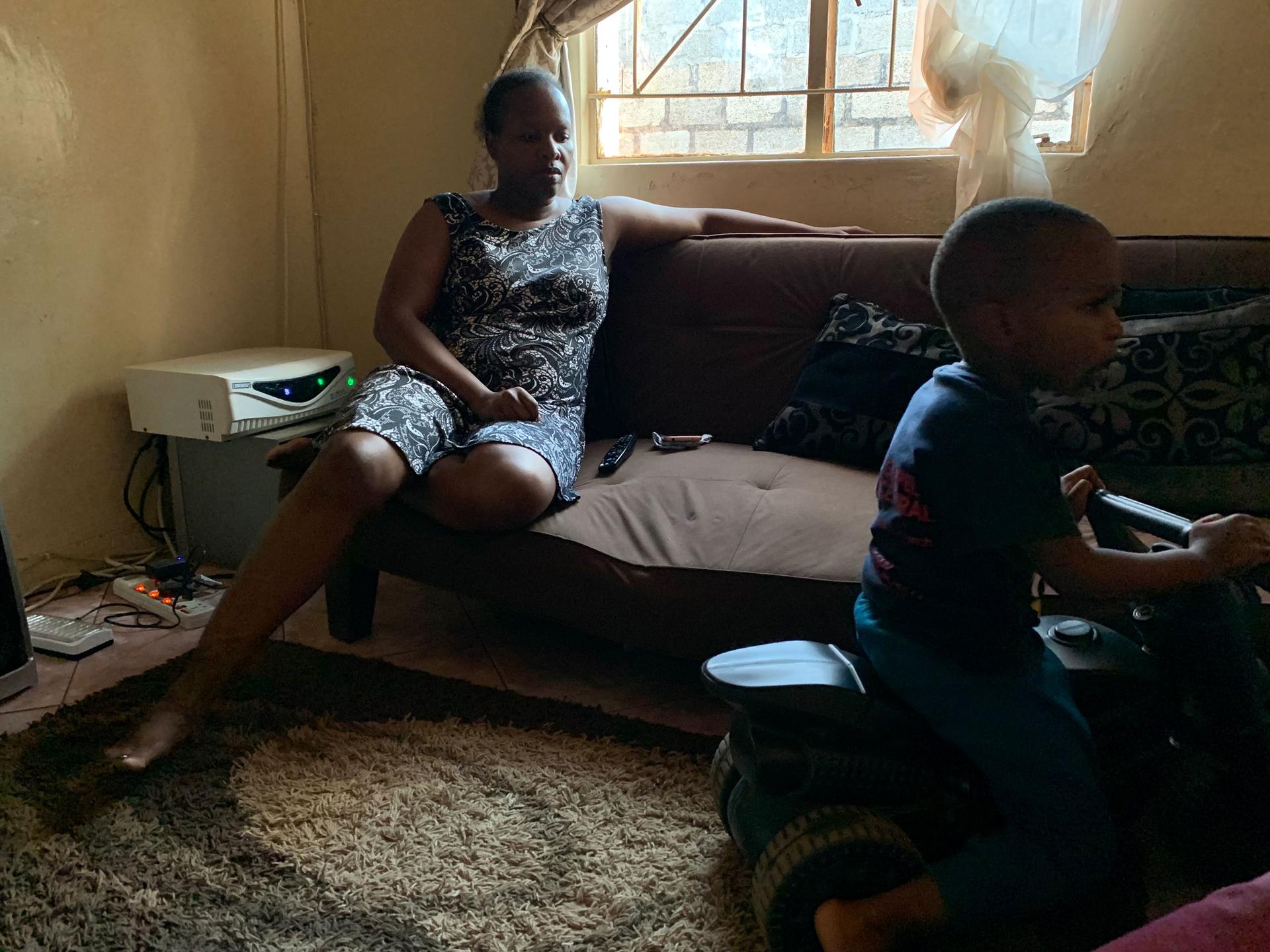
A long road to diagnosis
Phiri tried physical therapy after her first medical evaluation, but her walking never fully recovered. Soon after, other problems arose that began to affect her ability to work as a banker.
“After some time, I would notice I wasn’t able to write,” Phiri said. “I would hold the mouse and not know that I was pressing on it.”
Over three years, Phiri was evaluated by 10 doctors. Each provided a different diagnosis: tendonitis, sciatica and stroke – among others.
By 2019, her leg had become weaker and increasingly numb. At the age of 34, she started to walk with a cane. This caught the attention of fellow church member, Dr. Deanna Saylor, a neurologist from Johns Hopkins. Saylor, based in Lusaka since 2018, specializes in MS.
“I was at church and noticed a young woman with a small child who was walking with a cane,” Saylor said. “I overheard her talking about how her problems had come back yet again.”
Saylor introduced herself and asked Phiri to come to her clinic. She agreed.
The next day, Saylor ordered a workup for Phiri at the University Teaching Hospital, including an MRI of her brain and spinal cord.
The results were unequivocal.
After three years, Phiri finally had an answer to her symptoms.
“I don’t feel that any of the doctors had considered multiple sclerosis,” she said.
Related: Brazil’s public health workers race to tackle dengue surge
Saylor said that, like most other medical providers around the world, she was taught that MS is very rare among Black Africans.
“That dogma is just so strong that MS doesn’t exist in sub-Saharan Africa. It’s so strong that people have stopped looking for it.”
“That dogma is just so strong that MS doesn’t exist in sub-Saharan Africa. It’s so strong that people have stopped looking for it,” Saylor said.
This notion results in a long road to diagnosis that has consequences for patients living with the disease.
MS flareups occur sporadically, but symptoms never fully resolve.
“Over time people can become quite disabled if they’re not treated,” Saylor said.
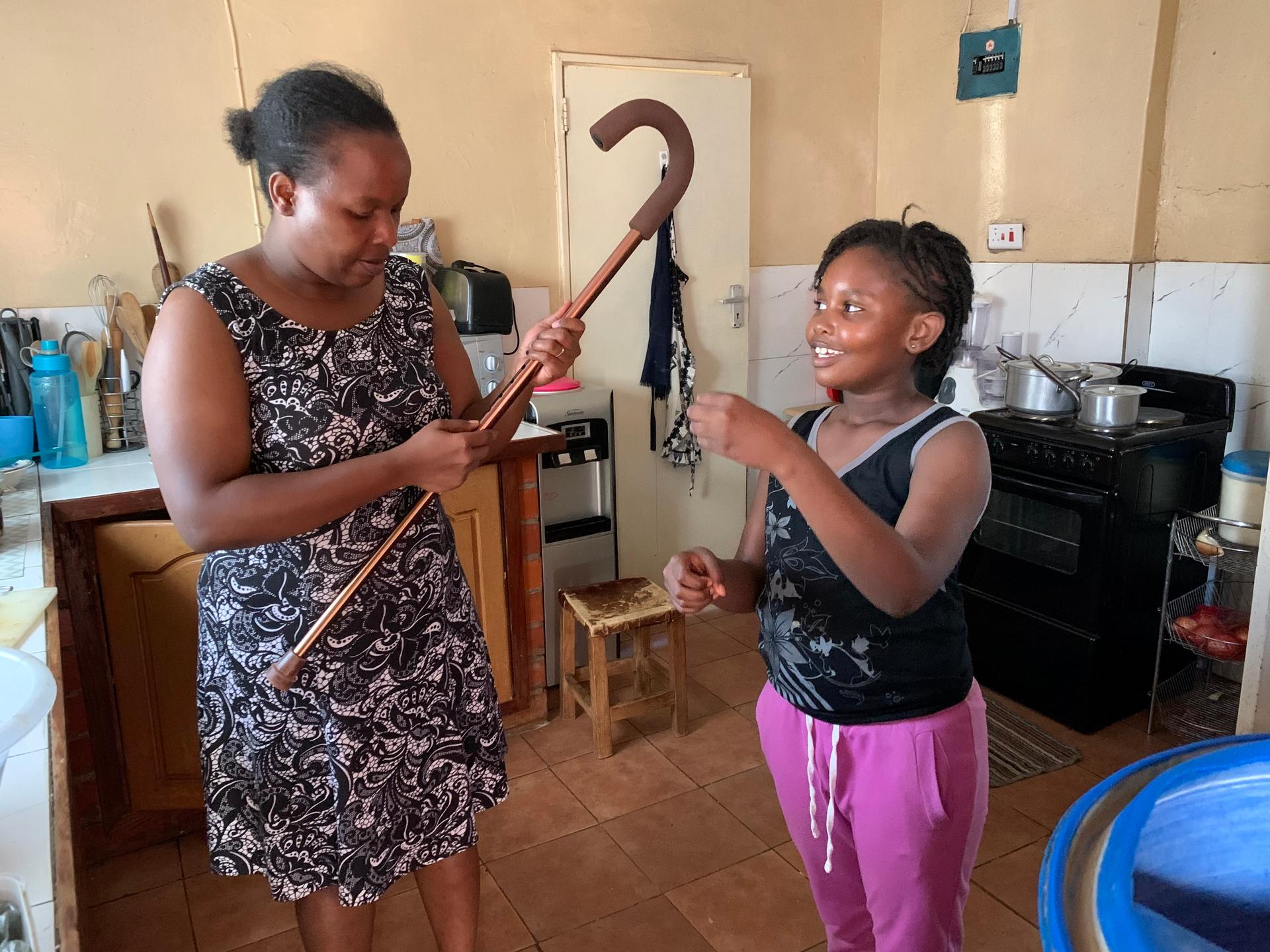
Raising MS awareness
The cause of MS is largely unknown. The disease tends to affect adults beginning in their 20s and 30s. People who live further from the equator are more likely to have it and this is thought to be related to Vitamin D.
Saylor has been exploring the origins of how MS was understood to be rare in sub-Saharan Africa.
“I think the short answer is that people equated the absence of data to the absence of disease,” Saylor said.
Alarmingly few studies exist on MS prevalence in the region.
Saylor argues that historical estimates were also heavily biased; they were based on research out of South Africa during apartheid or from private hospitals in countries during and soon after colonialism.
Getting a better idea of the disease also requires the right technology and experts to diagnose it.
“We always like to say here: Is it the absence of MS in sub-Saharan Africa or the absence of neurologists and MRIs?” Dr. Mashina Chomba said. He is among the first group of Zambian neurologists who trained in the new neurology residency program at University Teaching Hospital, established in 2018 and led by Saylor.
Related: As global oil prices surge, some African countries may see a silver lining
Sub-Saharan Africa has the fewest neurologists per capita in the world — more than 100 times less than the United States. The program has trained seven neurologists to date and set up a clinic and hospital service.
“We got to see patients with different presentations that were sent to our care. … We got to see [that] we have patients who fit the description of multiple sclerosis.”
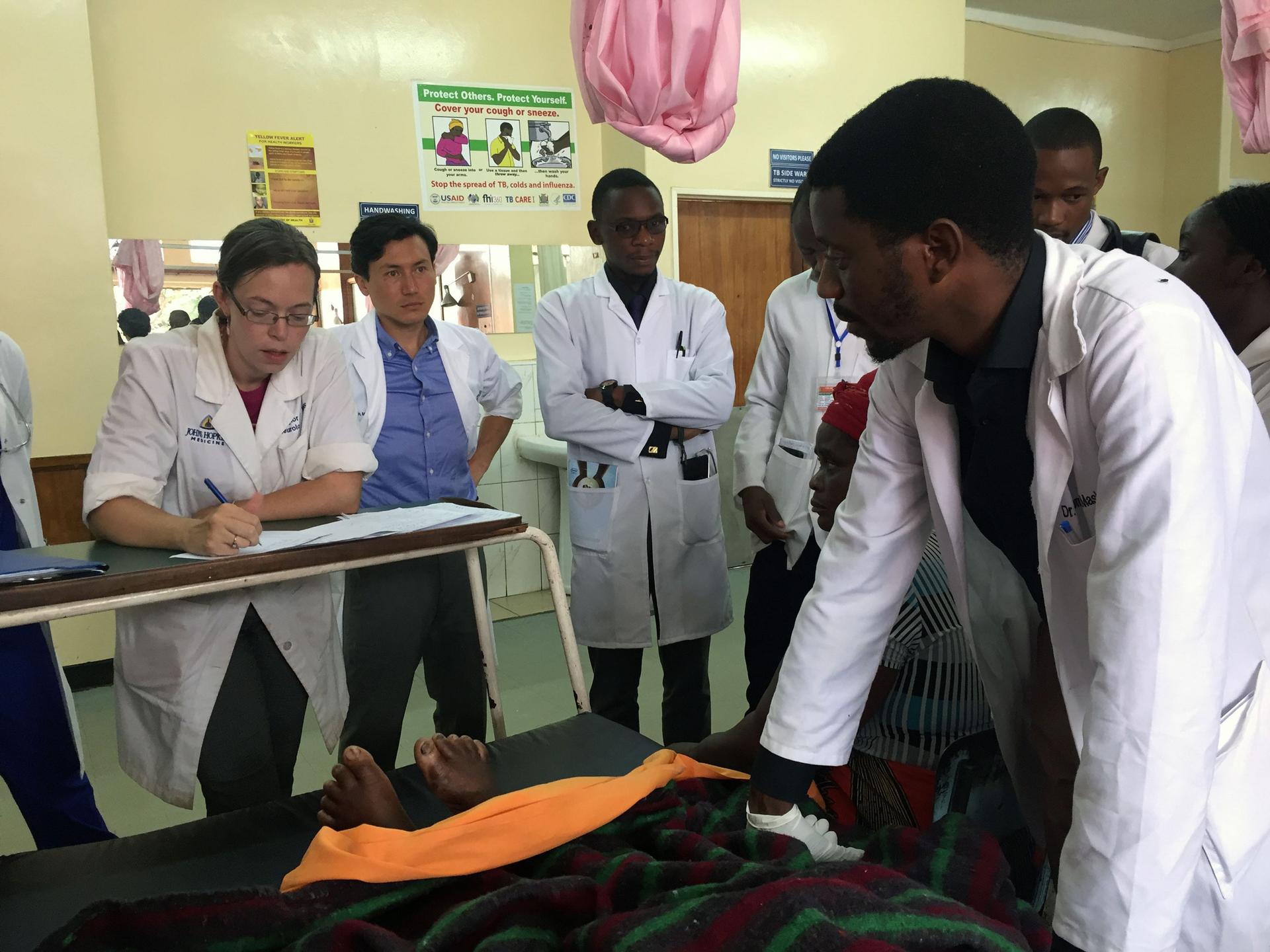
“We got to see patients with different presentations that were sent to our care,” Chomba said. “We got to see [that] we have patients who fit the description of multiple sclerosis.”
Since starting the program, they have diagnosed and treated about two dozen patients living with MS, such as patient Muchimba Kabeta.
Twice a year, Kabeta, 33, heads to the chemotherapy unit at the University Teaching Hospital to receive an infusion of the medication Rituximab, to help prevent MS flare ups.
Related: Why auto-disable syringes are key to vaccinating the world
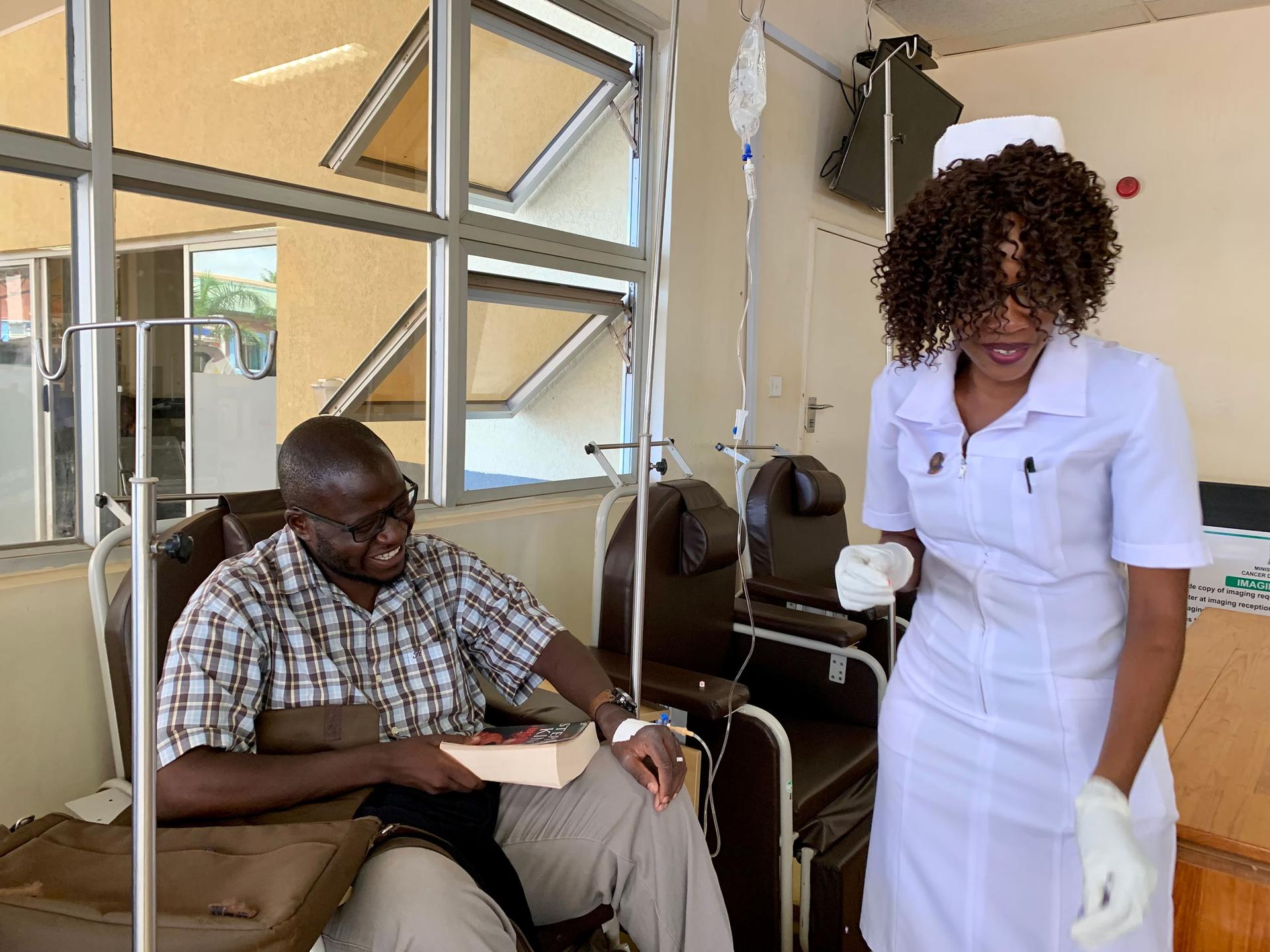
Kabeta, a relatively new patient, is still learning how to position his hand correctly for the treatment.
“I haven’t been a patient for too long. … My mind is still in denial.”
“I haven’t been a patient for too long,” he said. “My mind is still in denial.”
Kabeta was diagnosed after almost 10 years of unexplained symptoms.
He had been training to become an orthopedic surgeon, but ultimately had to stop because of his disabilities. He now works for the Zambian Ministry of Health.
Even as a physician himself, he never considered the possibility of having MS as an African man.
“And that’s the very first step,” Kabeta said. “If we can just say ‘what if’ [or] ‘could it be this,’ I think that would go a long way in MS awareness among the doctors.”
Soon after his diagnosis, Kabeta and Saylor started the Zambian Multiple Sclerosis Society. In addition to spreading awareness, they aim to create a support and resource network among MS patients. The group has also advocated for better access to MS medications from the government.
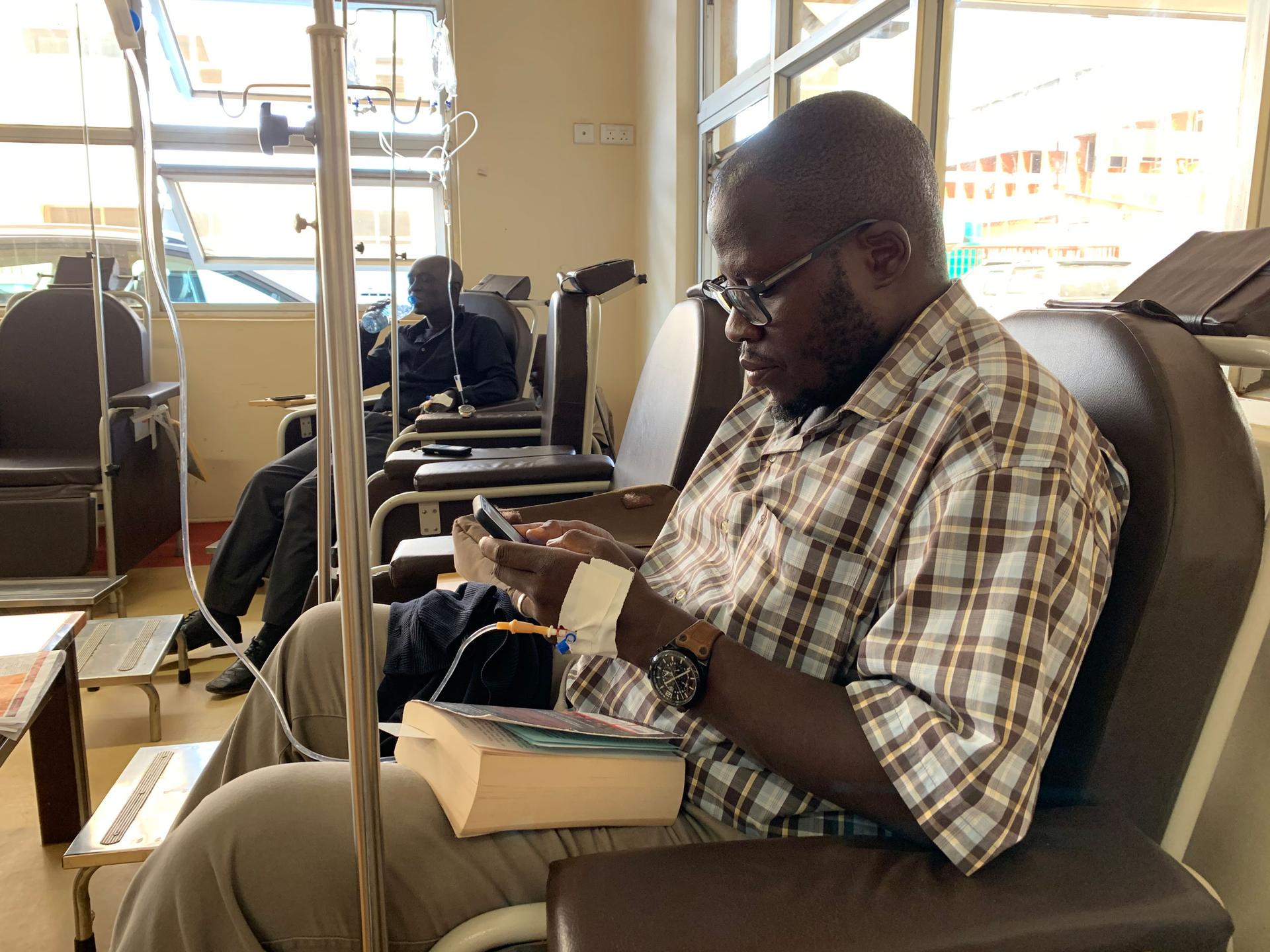
Along with their research, Saylor and Chomba are making efforts to educate the community. Their MS patients had symptoms for an average of four to five years before being diagnosed. Many of them also had more financial means than the average Zambian.
“That makes us worried that we are probably missing quite a lot of patients in our population who are not lucky enough to have the same resources and ability to pay for multiple consultations with doctors until they get diagnosed. We’re probably seeing the tip of the iceberg.”
“That makes us worried that we are probably missing quite a lot of patients in our population who are not lucky enough to have the same resources and ability to pay for multiple consultations with doctors until they get diagnosed. We’re probably seeing the tip of the iceberg,” Chomba said.
The realization about MS in the region follows a pattern where a country lacks medical expertise and resources in a particular field. That can lead to misperceptions, Chomba noted, like when Zambia lacked oncologists until the 1990s.
“We trained the first oncologists in Zambia, and we started diagnosing a number of cancers that we thought were very, very rare,” Chomba said.
After Phiri was diagnosed with MS, she was able to get treatment and has not had a flareup since. She hopes others will never have to go through the same struggle that she did.
“I’m open to speaking to whoever who would listen. … So that even when they see another person experiencing something similar, it doesn’t have to take that long.”

“I’m open to speaking to whoever who would listen,” Phiri said. “So that even when they see another person experiencing something similar, it doesn’t have to take that long.”
Phiri is now a mother of three. And she no longer uses a cane.
